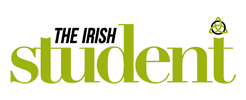Bachelor of Science (Honours) Athletic & Rehabilitation Therapy
The term sports injury refers to the kinds of injuries that most commonly occur during sports or exercise. Some sports injuries result from accidents; others are due to poor training practices, improper equipment, lack of conditioning, or insufficient warm-up and stretching.
Although virtually any part of your body can be injured during sports or exercise, the term is usually reserved for injuries involving the musculoskeletal system, including the muscles, bones, and associated tissues such as cartilage. For example, tennis elbow, runner’s knee, breaks to bones, torn ligaments and torn tendons. In this honours degree, students will become skilled in the prevention, assessment, diagnosis, treatment, and rehabilitation of musculoskeletal injuries related to physical activity.
What will I experience?
In first year, the basic building blocks of science are introduced, as well as a number of modules which build on transferable skills and pave the way for the transition to third level education. Athletic rehabilitation therapy is introduced as a profession and students will have the opportunity to become involved in the pre-participation screening of injuries in various teams including collegiate and professional teams. In the second year, anatomy, conditions and injuries serve as the theme, while students will be introduced to clinical practice through student-led clinics and practical placements.
In year 3, clinical practice with student-led clinics is further developed and the main themes are injuries, diagnosis and therapies, thereby creating the foundation pillars for the clinical practice placement which takes place in the first semester in year 4.
In the final year, the emphasis is on advanced clinical and rehabilitation techniques with the clinical practice placement having an embedded research project strand. The final year is really a capstone year designed to cap all the skills acquired by the student throughout the four years of the programme, preparing them for the profession of Athletic Rehabilitation Therapy and employment as a professional clinical practitioner. A key element of this course is that Pre-hospital Emergency Care Council of Ireland (PHECC) approved first aid courses are embedded into the course. Students will become certified Cardiac First Responders (CFR) and Emergency First Responders (EFR) by Year 2 of this programme.
Further Information:
Bachelor of Science (Honours) Athletic & Rehabilitation Therapy
Recent Posts
- Galway school is third time Irish winner of European translation contest
- 83,447 applicants at close of 2025 CAO exceptional application deadline
- Equal1 launches environmental competition for students to celebrate 60th anniversary of Bell’s quantum breakthroughs
- New Pharmacy, Dentistry and Medicine courses announced for 2025
- 5,385 applicants to receive CAO offers today 5th July 2024

